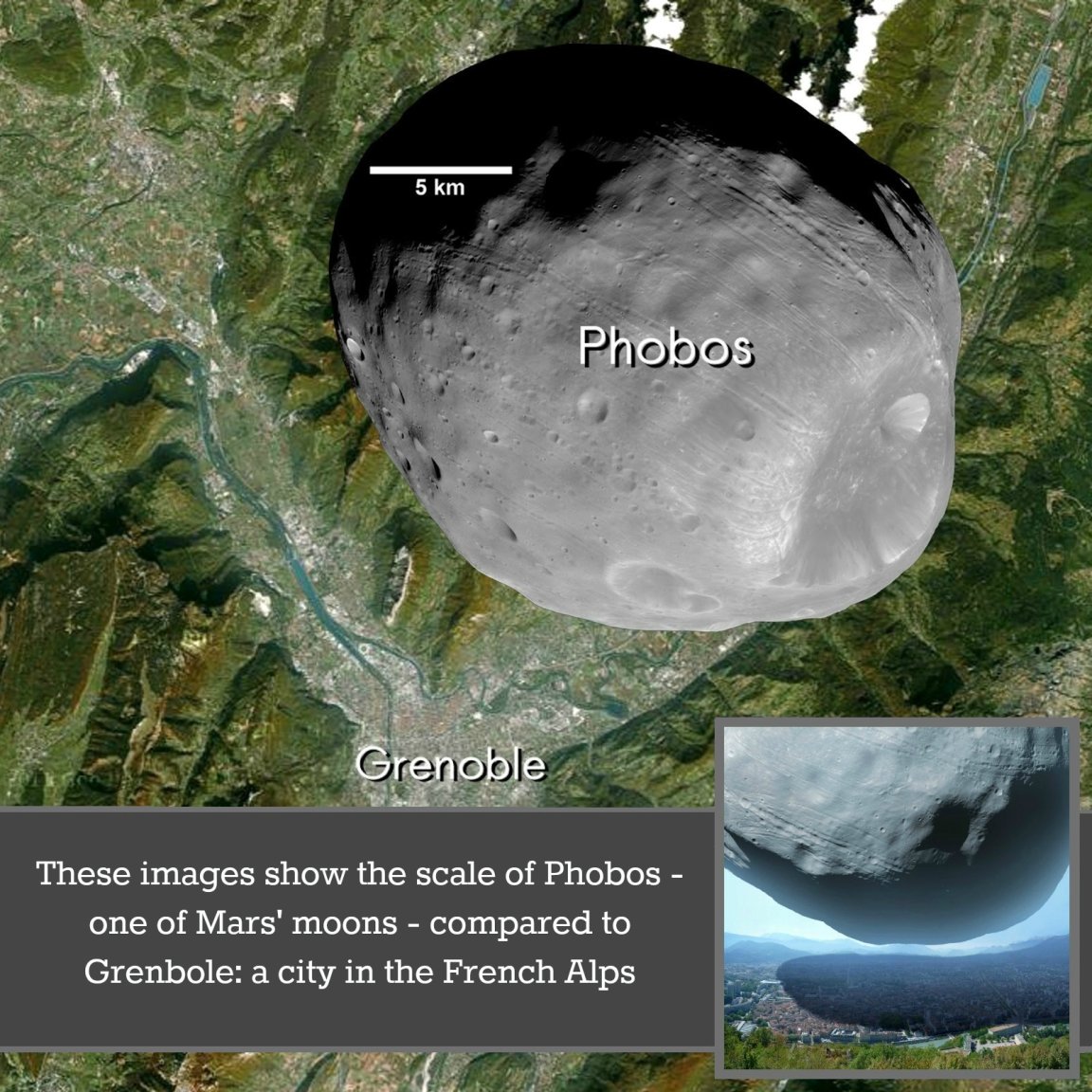

Located approximately 5,800 miles (9,400 km) from the center of Mars, or about 3,700 miles (6,000 km) above the Martian surface, Phobos – one of the two the natural satellites of Mars – orbits its parent planet from a shorter distance than any other (known) moon in our solar system. Because of this short distance from Mars, Phobos completes one full orbit around Mars before it can make one full rotation around its axis. If one could stand on the surface of the Red Planet and look up into the night sky, Phobos would zoom across the sky in just under 4 hours and 15 minutes. On another note, any observer on Mars would see Phobos rising in the west and set in the east (the polar opposite of what one would see on Earth)
DEAD MOON, WALKING:
The rather short orbital period of the small moon, paired with its close proximity from the planet, tidal interactions between Phobos and Mars has caused its orbital radius to decrease even further, which will eventually give way to one of two things. Either Phobos will break apart and form an intricate set of rings that could rival the ones that famously belong to Saturn, or Phobos will reach Mars’ Roche Limit: a region estimated to lie around 4350 miles (7,000 km) above the center of Mars (or 3,853 miles/6,200 km above the Martian surface) and it will crash into the surface of Mars, acting as a giant nuclear-bomb.
THE SCALE OF PHOBOS;
Now, when trying to grasp the scale of almost any and all objects in space, be it the mind-bogglingly large or the negligibly small, the best way to understand is by comparing the object to things we know. In this case, we’ll compare it to a place on Earth called Grenoble, which is located in the Alps of France.

When we look at the two comparisons, we see that the entire town of Grenboble is capable of fitting inside the largest crater of Phobos, Stickney Crater. This beast is about 5.6 miles (or 9 km) in diameter. Since Phobos itself has a radius of about 6.9 miles (11.1 km), it covers a substantial portion of the small moon.
Lastly; not only is Phobos one of the smallest natural satellites circling planets in our solar system, it’s also one of the most peculiar in every way. It’s highly irregular shape, which has dimensions of 27 × 22 × 18 km — is a result of the tiny moon not having sufficient mass to round into a sphere under its own gravity. Perhaps this indicates that Phobos and its smaller counterpart, Deimos, were both asteroids at some point (more specifically, it spetroscopically appears to be similar in composition to D-type asteroids like 152 Atala, and 944 Hidalgo. They are famous for being rich in silicates, carbon and anhydrous silicates) Perhaps both once resided in the asteroid belt between Mars and Jupiter, but were captured by Mars after a close gravitational encounter that occurred hundreds of millions of years ago.
On a more batty note, it has been hypothesized in the past that Phobos’ unusual orbital characteristics gives credence to the idea that the moon may be partially hollow inside. This idea was popularized by Russian astrophysicist Iosif Samuilovich Shklovsky, who also suggested the moon may be of artificial origin, but I won’t go into that one.
While Phobos might not demand hte same level of attention as Titan or Europa, the moon is still an incredible place, filled with mystery. Wonder what it would be like to spend a day on Phobos? Click here.